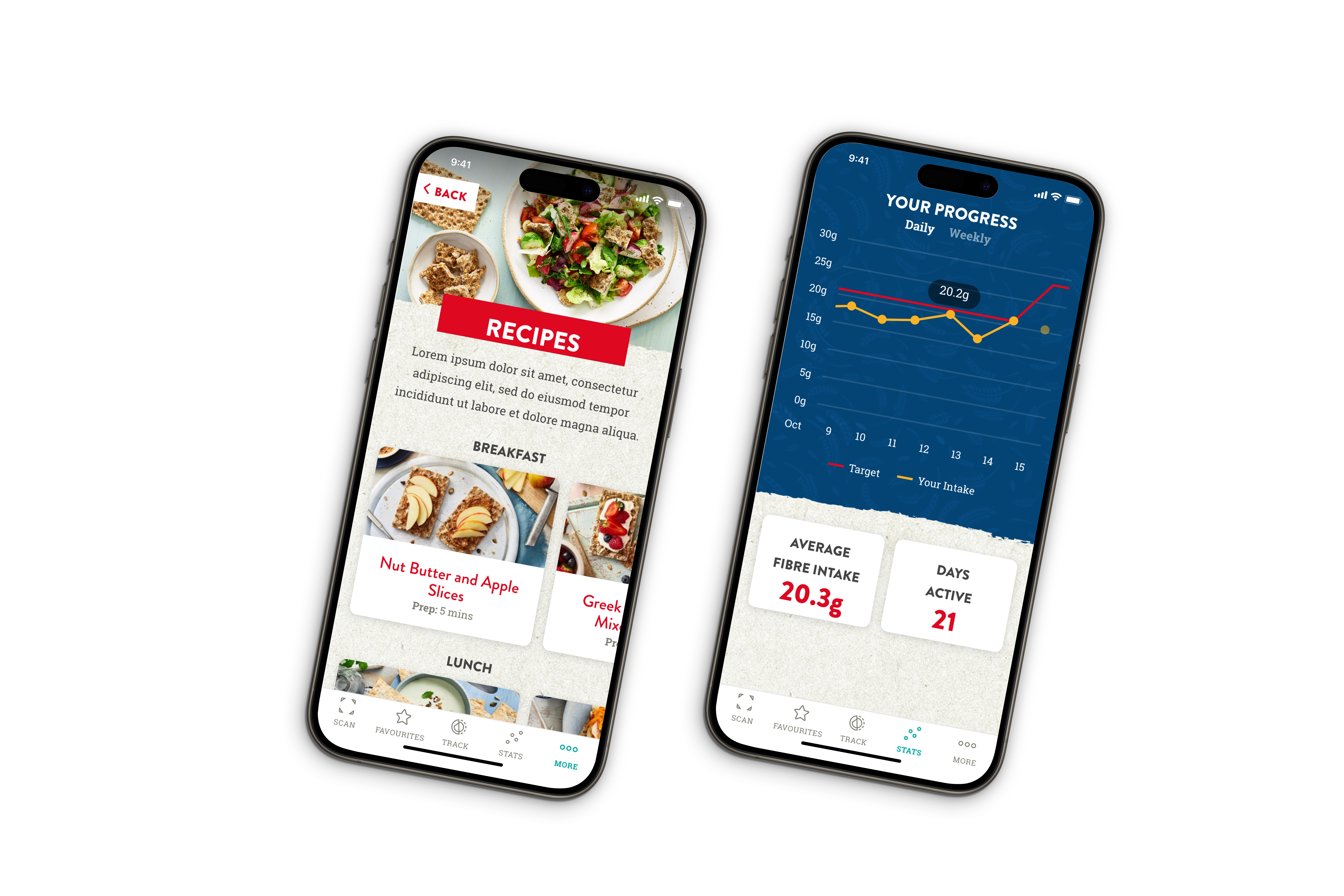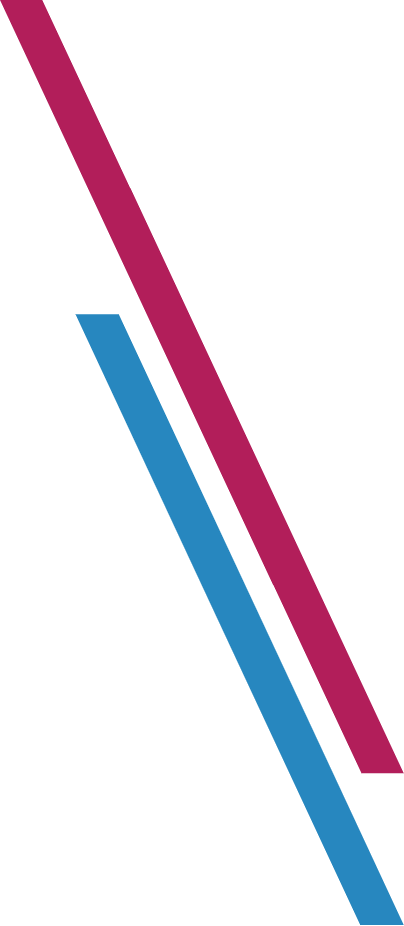Ryvita FibreFit
Helping the nation improve it’s diet.
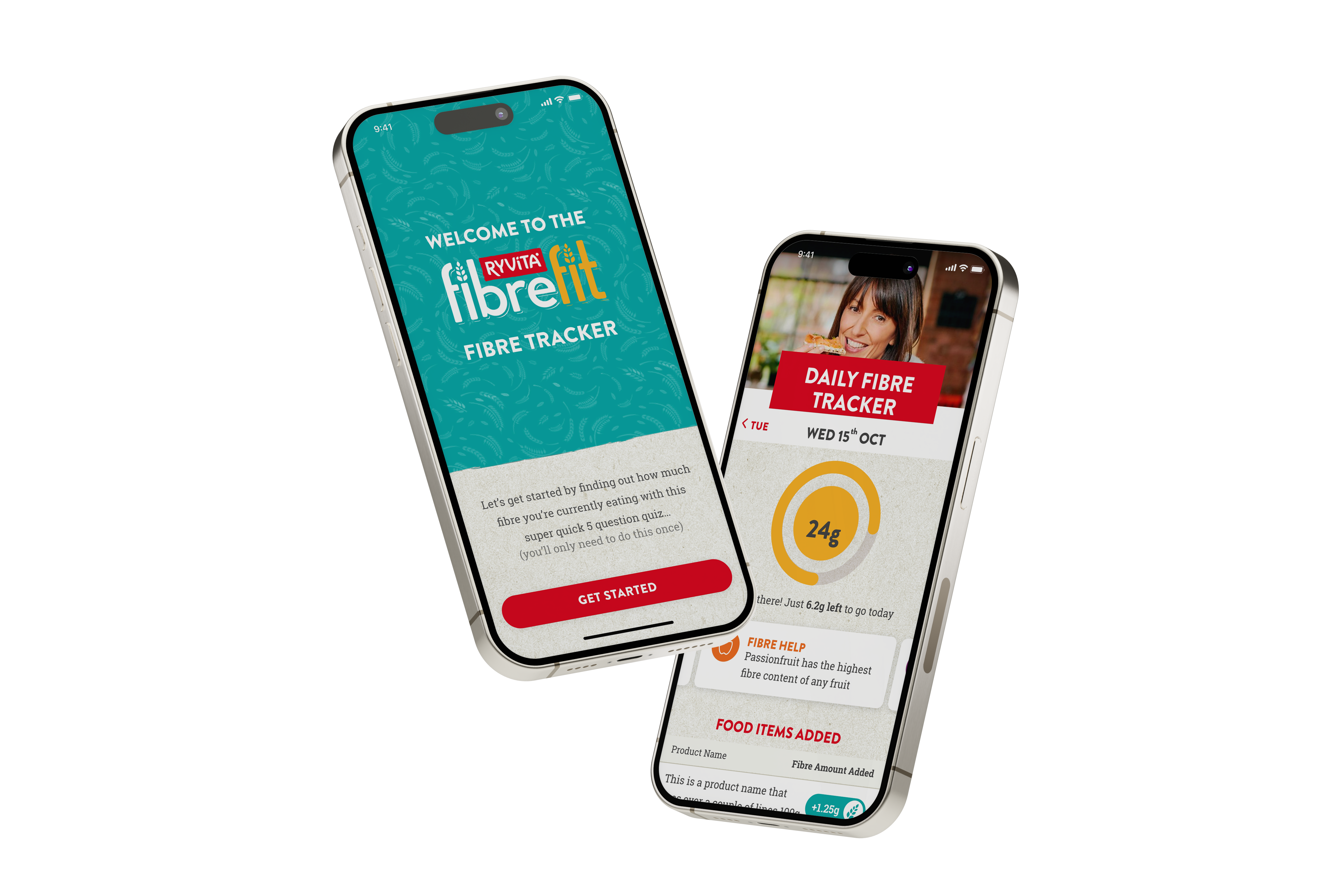
Ryvita, the much-loved crispbread brand, wanted to help the nation improve its diet.
Ryvita, which started trading in 1925, has grown to become one of the UK’s best-known food brands passionate about making healthy living enjoyable.
‘What and how much we choose to eat’ is one of the biggest contributors to good health in the UK, according to Public Health England. Lack of dietary fibre is a particular concern, leading to both short and long-term health concerns including bowel cancer. Yet according to the British Nutrition Foundation, most people in the UK do not reach the recommended levels of 30g a day.
During research before the first wave of Ryvita’s FibreFit campaign, they found that only 1 in 10 UK adults are eating the recommended 30g of fibre each day, driving them on a mission to make this 1 in 5 over the next 5 years – which means changing the behaviour of over 6 million UK adults.
The Challange
The company’s FibreFit campaign aims to support people in gradually increasing their fibre intake to the recommended 30g over 30 days. Ryvita wanted to create a mobile app which would incentivise this challenge in a compelling way, both alongside the campaign and beyond it, and turned to Vidatec, with its rich pedigree in developing apps such as Couch to 5K and Change4Life to help.
The mobile app needed to:
- Educate users about dietary fibre, its importance to good health and the foods in which it is found
- Incentivise the process of increasing dietary fibre intake, to work up to the 30g a day target
- Introduce techniques to encourage users to track their intake daily
The core audience for the campaign is middle-aged people, so the app also needed to be intuitive and accessible for this group while also allowing Ryvita to reach new customers.
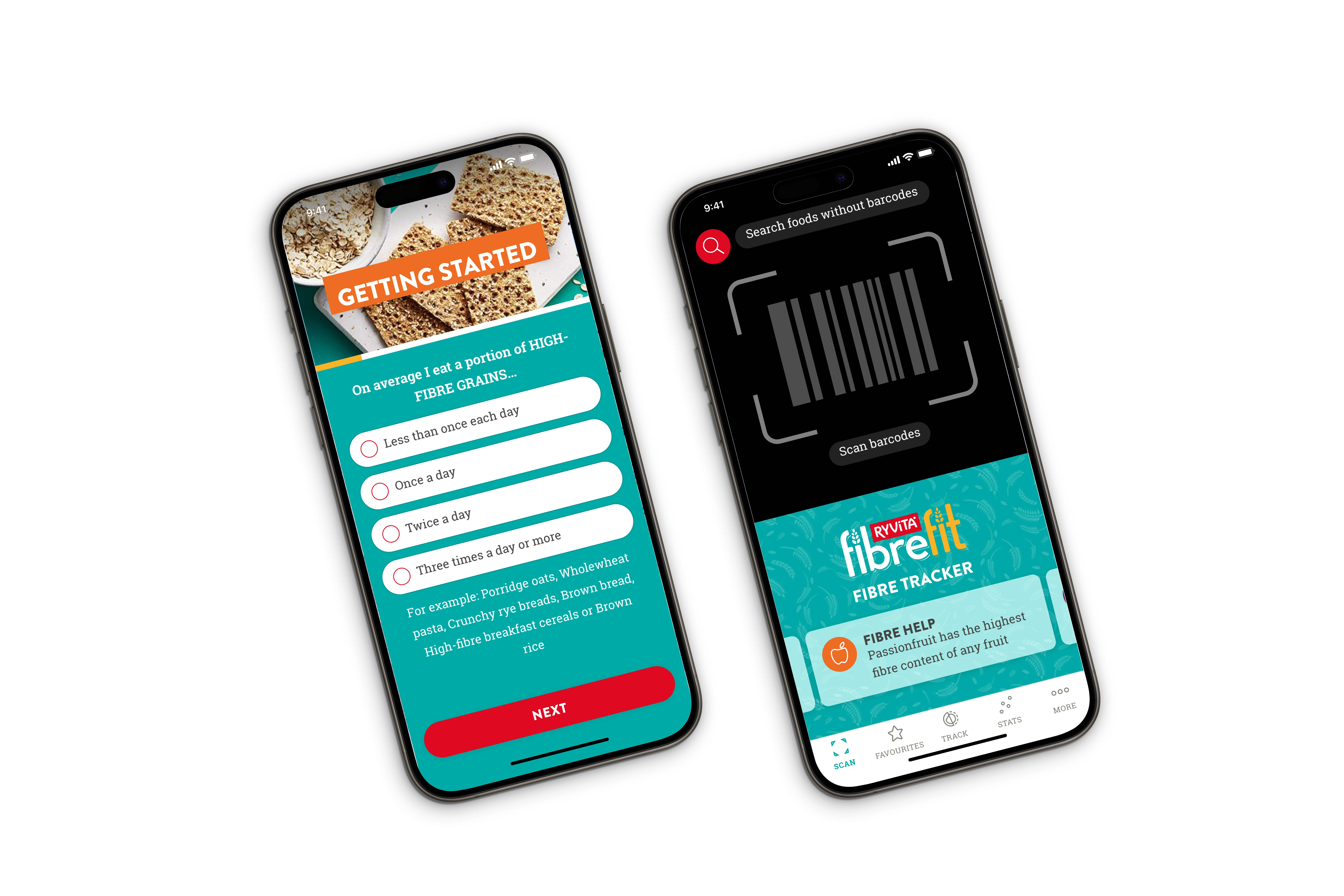
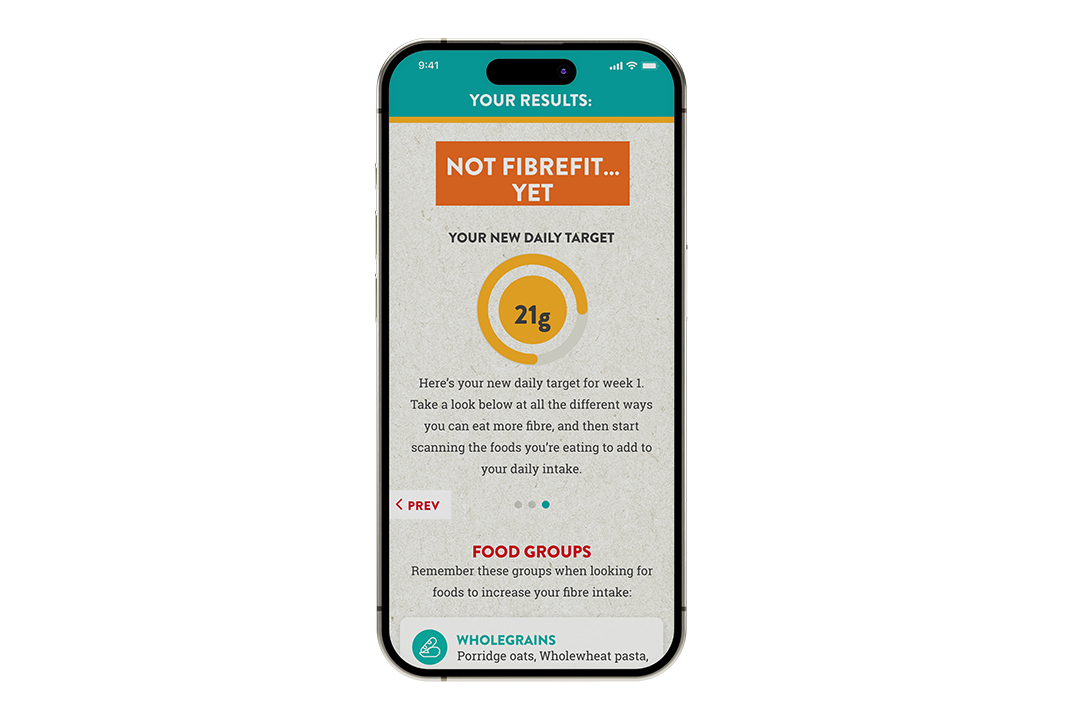
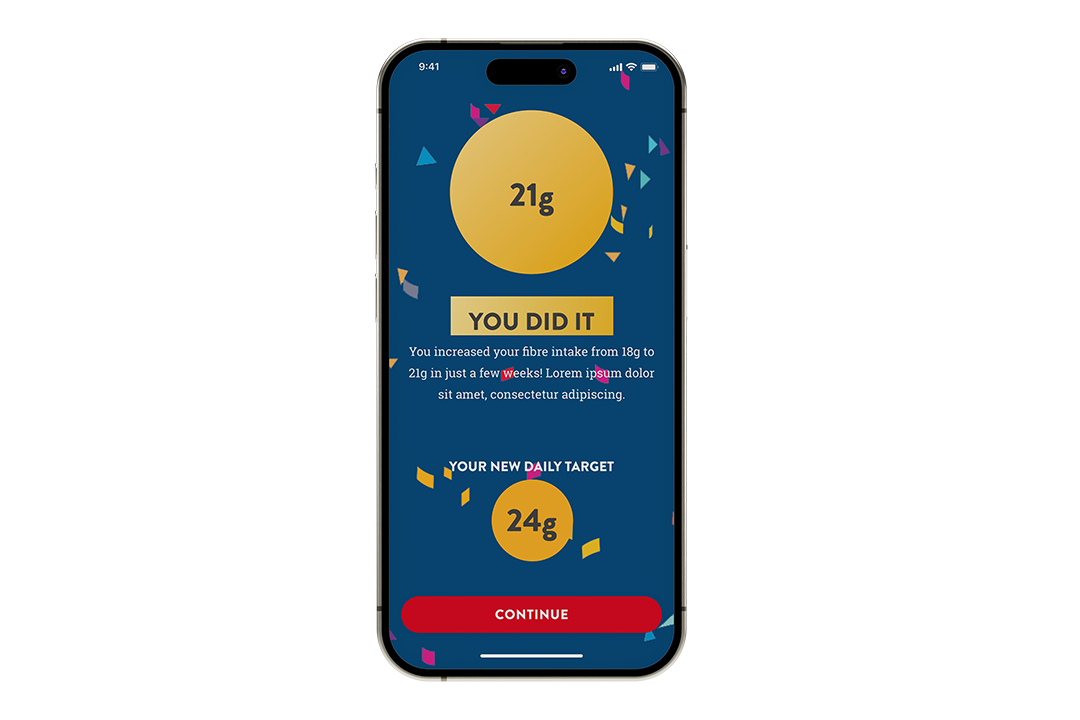
The Approach
Vidatec worked closely with the Ryvita marketing team to develop the FibreFit mobile app.
The user journey begins with a series of weighted questions relating to the user’s fibre intake. These are used to set a daily fibre intake which is divided into stages.
The user logs their food eaten each day, and, through a series of databases including Neilson Brandbank the app queries the Brandbank database to access the latest product information and check fibre levels across a variety of food types as well as individual products, this enables the app to calculate their fibre intake. As they achieve each stage a new, slightly higher fibre target is created. Users can also scan the barcodes of products either whilst shopping, in order to guide them through the selection of higher-fibre products, or when they are eating. Manual input of product and fibre detail is also supported.
The app achieves the initial objectives through a series of considered approaches and design concepts, including:
- An Emphasis on Education: The app provides detailed information on the different sources of dietary fibre, which are colour-coded for easy use. It also provides tips, recipes and advice, including information about the health benefits of a high-fibre diet.
- Gamification: The user is gradually moved towards the 30g target in an incremental and therefore more achievable way. As targets are met, they unlock new goals in a way that is designed to encouraging ongoing usage with the app
- Engagement techniques: From a series of notifications, to a user dashboard detailing how many ‘active days’ have seen information inputted, the app is designed to nudge the user and encourage regular engagement.
The Final Result
The FibreFit app designed for mobile provides a more convenient way for consumers to engage with Ryvita’s FibreFit campaign. Helping to promote small steps people can make to achieve their recommended daily fibre intake.
The app helps those that either want to get more fibre into their diet, track how much fibre they’re currently getting as well as those taking part in Ryvita’s #30in30 challenge by providing an easy, quick and simple way to track your fibre each day. Whether it’s scanning product barcodes or typing in your favourite foods, the app is there to help and support with recipe ideas as well as hints and tips.
Ryvita’s FibreFit mobile app is now available for free on the App Store and Play Store to any user who wishes to download it.
